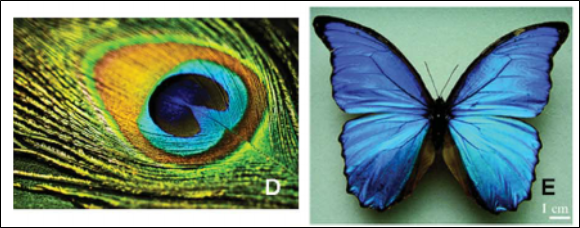7667766266
enquiry@shankarias.in
Prelims: Science and technology | Current events of national and international importance
Why in news?
Recently, scientists at the Centre for Nano and Soft Matter Sciences (CeNS) have now found a way to harness a property known as structural coloration.
Centre for Nano and Soft Matter Sciences (CeNS), an autonomous institute of Department of Science and Technology (DST) under Ministry of Science and Technology is located in Bengaluru.

Structural colors arising from nanoscale geometry can be finely tuned by varying both the size of colloidal spheres and the angle of light incidence.
Reference
PIB| Tuning Structural Coloration in Laboratory